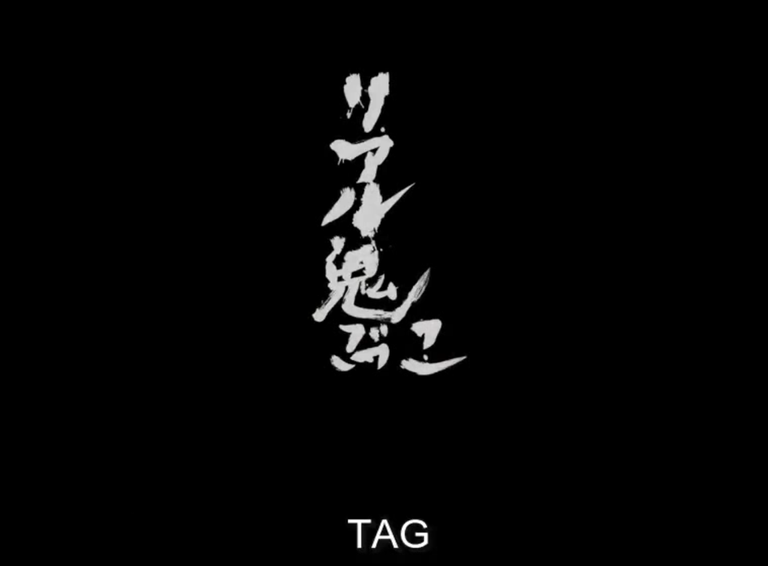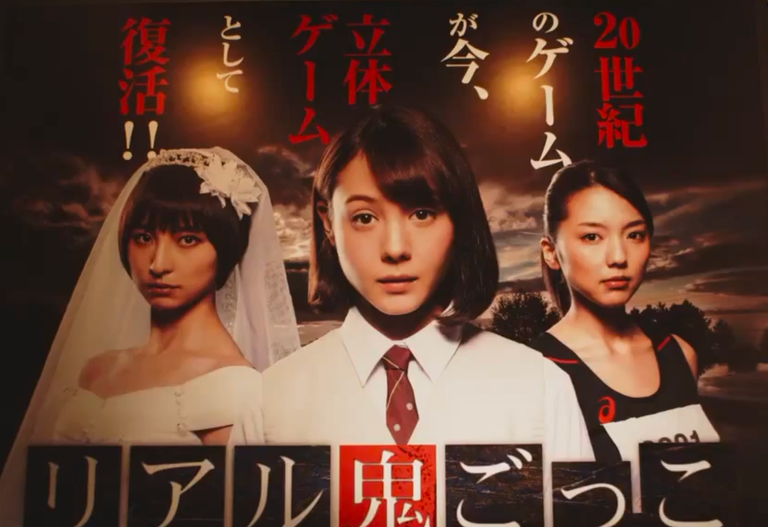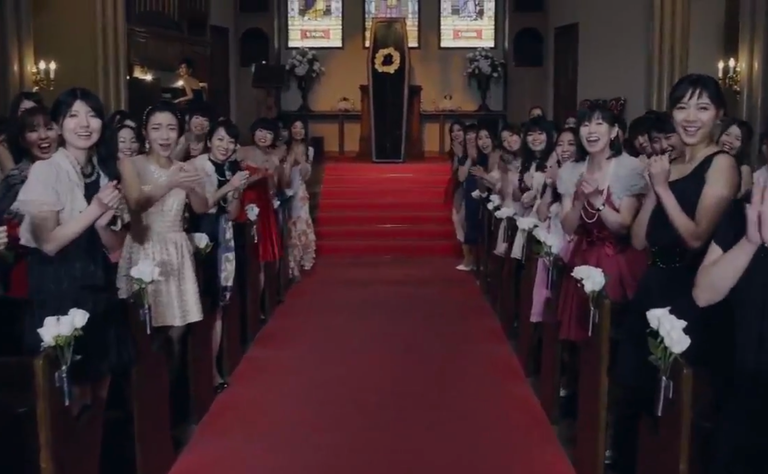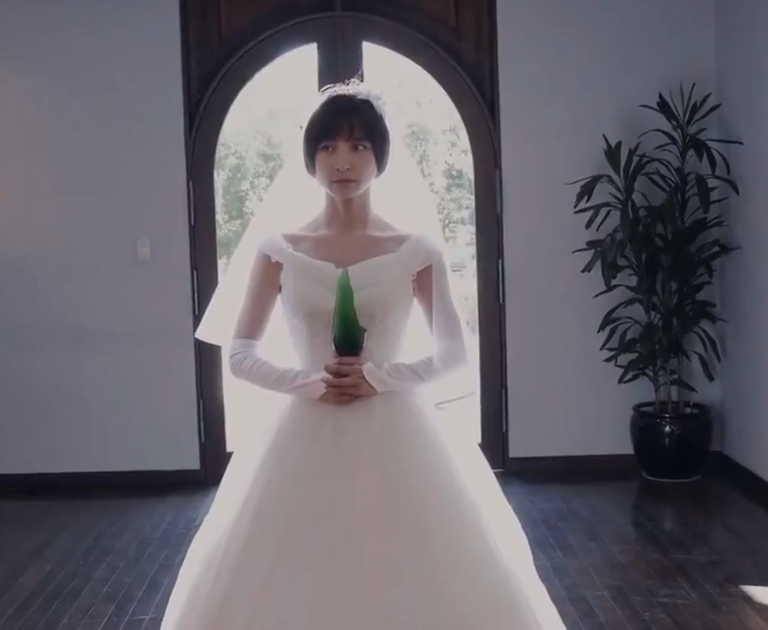Film Review: TAG (Riaru Onigokko)
 Screenshot
Screenshot
 Screenshot
Screenshot
Hello Again, Mr. Sono
I would like to start this post off with a shout-out to nihonfi1m on Instagram, an account focusing on some of the brilliant gems in the Japanese cinematic landscape. It certainly awoke a slumbering desire within that had at one time led me to voraciously devour some of these masterfully crafted works of visual art like a large sperm whale inhaling a school of shrimp. It thus feels appropriate that one of the land's most (in)famous sons would form a part of the welcoming community with yet another extreme little effort by the name of TAG.
The film begins with two buses acting as centerpieces to an otherwise picturesque day. The passengers consisting of ecstatic high school girls without a care in the world, singing songs, exchanging gossip, and simply radiating with an intoxicating joy appropriate for a group of youths without a care in the world and only bright possibilities on their sunkissed roads. It's indeed against this backdrop that the following tragedy is augmented, as an ominous wind proceeds to slice both buses in half along with all their passengers. All save one. Yes, welcome to Sion Sono's world, dear viewers, why don't you stay a while?
Our protagonist, Mitsuko, avoids the grizzly fate of her fellow passengers by fortuitously ducking down at the critical moment to pick up a pen that she had dropped. When she does eventually come to realize the blood-drenched state of affairs surrounding her, she understandably runs to any area that will provide even the slightest bit of security amidst the confusion and carnage. In classic Sono style, the weirdness is often followed by even more weirdness, young Mitsuko breaking into a sprint to reach the familiarity of her school only to arrive and find that her classmates are not only alive and well, but very much so. Possessing no recollection as to the horrors that Mitsuko is convinced had transpired.
Once her friends manage to calm her down and convince her that all is well, the film takes another massive turn, giving viewers as much respite as the protagonist before turning the world upside down again. If an ominous wind slicing buses in half was not enough to grab the poker chips from the proverbial table of bizarreness, then Sono raises the stakes with gun-toting teachers who decide to massacre their respective homeroom groups. Mitsuko and her mates find themselves on the run again. If you thought it was hard to wrap your head around the first few events, then prepare yourself for a little identity switching, for while Mitsuko manages to escape her hazardous school/warzone, it comes to only be the equivalent of finding temporary escape from the frying pan to the slow realization of the rising flames of the fire.
Mitsuko appears to unknowingly find herself in some alternate dimension where she assumes different identities at different intervals. From school girl to bride, and bride to marathon runner. Mitsuko must try her best to avoid the perils of each circumstance, despite the overall confusing state of affairs that offers little by way of explanation as to why everything has gone pear-shaped. Mitsuko's friends make appearances and attempt to assist as much as they can to provide some kind of support and understanding, pointing out in no uncertain terms that she is positioned as the central figure within this madness and that she does have it within herself to bring it all to an end.

Art and/Or Pretension
Conventional film reviewing will probably be jettisoned out the window for this one, and I ought to warn the reader that spoilers lay ahead, so by all means, get to watching this interesting film, or any others in this filmmaker's large filmography. If you are still here, then all the better still, but I must say that if film reviews are designed to give some viewpoint on good storytelling then Sono perhaps fails, although to what extent he fails is up to the cinephile who judges his work. However, as I've come to see, these concepts seem to make little to no difference to this filmmaker, and there always seems to be a greater desire to taunt audiences and possibly encourage deeper conceptual analysis of the various scenes.
I came to see TAG as a commentary of sorts on our deterministic world, and the series of smaller deterministic worlds within it. From the dynamics of typical school life to the wedding aisle that inevitably leads to the coffin or a marathon track that has a clear starting and finish line. However, beyond even that, the film itself frames this representation within a deterministic medium in and of itself, and while Mitsuko is encouraged to exercise a kind of Sartrean radical freedom, so too does Sono by breaking the rules of convention while nonetheless abiding by the laws of his own. I like Sono's films for presenting scenes that bleed with symbolic representation and are punctuated with striking colors, the colors of white and red appearing to be firm favorites. I found certain comfort and predictability with some of the themes that Sono likes to unpack, the focus usually being placed on the rigid social expectations and norms of Japanese society which he sets up to be challenged in myriad ways, to the various theistic themes and imagery that seem to find a home in many of his projects.
A big recurring theme within this particular film was that of innocence, purity, and possibility. In the first instance represented by the school girls and the continued insertion of feather pillows both on the bus, at the lake, and in the schools. The pillows, to my mind, represents the carefree innocence and joy of the metaphoric girl's slumber party, and there is added significance to the many feathers whose unpredictable trajectory to the earth is still constrained by the whims of deterministic principles. It appears to me quite significant that Mitsuko is the only girl out of her three friends to be wearing white socks and not black ones earlier on, again singling her out as the unique, innocent focal point of the film. This is taken further in her second identity change as the bride, appropriately fitted out with the wedding dress that inspires feelings of purity, chastity, divinity, and illumination.
However, instead of complimenting this rich array of symbolic elements with the traditional bouquet of flowers, which in itself represents life, beauty, and the growing towards a larger cosmic star, this is replaced with a broken green champagne bottle, which creates a fantastic juxtaposition with the white dress and the slow walk down the aisle. The aforementioned "good" qualities muddle in with the jagged edges of this impromptu weapon which communicates threat, harm, and no small degree of blood lust.
 Screenshot
Screenshot
 Screenshot
Screenshot
Mitsuko must battle her way through a confusing gauntlet of hostile enemies to eventually arrive at the final confrontation with the architect of this weirdness, the wizard sat behind the screen of illusion, as it were. God here is perhaps portrayed not as the caring paternal figure who carefully maps out our respective roads, but is rather portrayed as a devious weirdo playing with these characters like puppets in a show. The final moments proceed with an air of expectation, Mitsuko, no doubt framed as the virgin mother, is expected to lie down with a man on those same feather pillows that littered the earlier ongoings of the story. She is placed to complete this perverted narrative, but it is indeed at this point that Mitsoko enacts the long-awaited act of radical freedom, completing a separate narrative of the real author of the story, the one that goes unseen.
In The End, It Doesn't Really Matter
Thank you to those who have read this far and who are indeed prepared to read on a little further as I give something of a concluding remark of the film. TAG isn't good, which is to say that it's a chaotic mess that seems to assume profundity without really minding its Ps and Qs. I felt confused with both the protagonist and the antagonists, with no context given for each, and the production and acting left much to be desired. Yet, I've still always enjoyed the cinematography and the overall look and feel of Sono's films which always do very well to intrigue and attract any brave souls that decide to give his works a watch. Yet, I feel uncertain of even a negative review. Indeed even just the use of terms such as good and bad seems to ring hollow when it comes to this particular filmmaker's efforts, but an artist walking into a room of expectant enthusiasts who watch carefully and critically as he inserts a cigarette into a turd he just laid, remains an annoying component of this particular domain of expression. For our turd layer waits expectantly for one of these yobbos to applaud passionately as the rest of the crowd pretends to know what the supposed visionary has set out to accomplish.
I find it just as likely for Sono to embody this class of person as he is to embody the image of a brave creator who sees the medium as a way of breaking free from the constraints of his identity. So does it all matter in the end? I suppose it doesn't, for five more films have in all likelihood already been churned out by the time I finish bookending this review that feels as if it's gone on forever. On to the next one I suppose, and as always, happy viewing folks.
 Screenshot
Screenshot
This blog post exudes a great sense of enthusiasm and appreciation for the unique and thought-provoking film TAG by Sion Sono. The detailed analysis and interpretation of the film's unconventional storytelling and symbolic elements are truly engaging. Despite acknowledging the chaotic nature of the film, the writer's admiration for Sono's ability to challenge societal norms and dive into complex themes shines through. It's clear that the author finds value in the artistic expression and visual aesthetics of Sono's work, which adds an interesting perspective to the overall experience. Embracing the film's quirks and complexities as part of the viewing journey is truly commendable. This post serves as a reminder that artistry, interpretation, and creativity can spark meaningful discussions and reflections. Keep exploring and enjoying these cinematic adventures! Happy viewing!